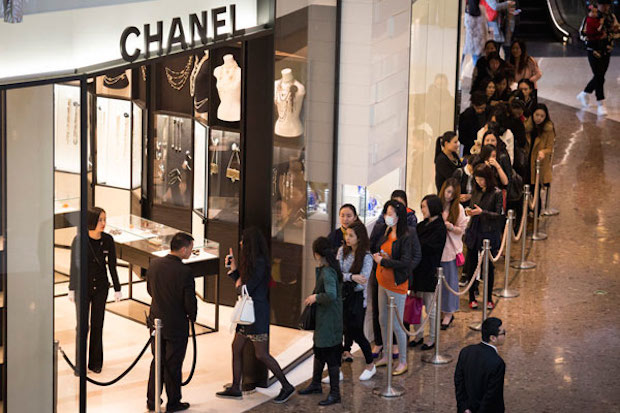Effects of luxury brand origin and brand image
In today’s marketplace, many brands use strong brand origin cues in their promotions appeals. This is highly prevalent in the case of luxury brands including behemoths like LVMH and Gucci to specialist luxury players like Patek Phillipe and Bremont, which highlight their luxury brand origin in every promotion. For example, specialist luxury watch maker Baume & Mercier highlights its luxury brand origin within their logo itself. Researchers suggest that in markets such as luxury fashions and accessories, a specific country of origin or foreign image in general may carry a prestige connotation. It has also been observed that luxury brands spend a disproportionate amount of their overall budget on brand image building.
When looking at the country-of-origin literature, one can see that most of the country-of- origin literature has emphasized origin effects at the product level as opposed to brand level. Professor Keller opines that brand related cues act as a crucial competitive advantage element for luxury brands. Moreover, researchers have increasingly called for measuring the impact of luxury brand origin and brand image on purchase intentions. In one of my earlier papers, I found that due to the highly social nature of luxury consumption, consumers try to gain social advantage by following the desired group’s consumption pattern. Focusing on different facets of the independent self, it can be theorized that consumers will demonstrate fitting in behaviour by using brands which match the image of the group they wish to belong to. Furthermore, researchers have emphasized that brand related cues may provide a key to an improved understanding of luxury consumption. Thus, if consumers use branding cues to create a sense of belonging, it would seem logical to study how such branding cues can influence consumers’ purchase decision.
In recent times, the issue of luxury consumption has received a great deal of interest among marketing scholars. However, little is known about how to optimize the market and manage consumer expectations using management controlled factors such as luxury brand origin and brand image.
To find an answer to the issue of how management controlled factors can be used to optimize consumer expectations, we carried out a study focusing on following two questions:
1. What is the influence of branding cues (i.e. luxury brand origin and brand image) on purchase intentions?
2. Is the influence same across developing and emerging markets?
The full study has been published in ‘Journal of World Business’ which is available at (http://dx.doi.org/10.1016/j.jwb.2010.11.002)
The answer to question one will help researchers and managers in knowing whether the large amount of money luxury brands spend on brand image is worth it or not. Similarly, the answer to question two highlights what kind of standardization and adaptation is required when promoting luxury brands in different markets.
With this goal in mind, we studied consumers from the UK and India using a structured quantitative survey.
Findings relating to luxury brand origin
Prior studies focusing on regularly consumed products have found a greater influence of luxury brand origin on collectivist consumers. However, contradicting results were observed in the context of luxury purchase intentions. The study results suggest that consumers in individualist developed market rely more on luxury brand origin cues than consumers in collectivist, developing markets. This can be attributed to the nature of the market and competition. British consumers have been exposed to the process of globalization for a longer period than their Indian counterparts. While the elite in the Indian market were as aware and consuming global luxury brands as their developed country counterparts, the masses were not. Furthermore, global luxury brands entered various developing markets including India in the late 1990s and early 2000s. For example, LVMH entered India through a joint venture in 2003, and Armani arrived in India only in mid-2007. The longer exposure of the masses to global luxury products, availability of more brands, and greater competition make British consumers increasingly aware of the luxury brand origin cues associated with the luxury products or brands. Therefore, to differentiate themselves, British consumers use stronger luxury brand origin cues than Indian consumers who only recently have been exposed to global luxury brands in their home markets.
The finding relating to brand image is worthy of attention. The study findings revealed that brand image does not influence consumer purchase intentions directly however it significantly moderates the relationship between normative interpersonal influences and luxury purchase intentions in both countries. This finding gives empirical support to the theorized argument put forward earlier regarding fitting in behaviour and the influence of brand image. The study shows that consumers demonstrate higher self-brand connection when the brand image is consistent with the image of the social group they wish to associate with. Brand image was also found to be an influential moderator for the relationship between informational interpersonal influences and luxury purchase intentions. However, this was only significant in the context of the UK. This finding corroborates the earlier result regarding the use of strong brand cues among the British consumers. It again highlights the importance of brand building.
Managers vying for acceptance of their luxury brands in developed markets like the UK should focus on developing a campaign that highlights the luxury brand origin prominently. The findings highlight the interesting contrasts in consumer behaviour across nations. Indian consumers are highly focused on social acceptability and look for others views of reality to fit in. On the other hand, British consumers associate with a favourable luxury brand origin to fit in. Luxury brand managers need to be aware of consumers’ limited awareness and understanding of luxury brands in developing markets (due to less exposure). Therefore, it may be necessary to opt for meaningful co-branding and joint ventures in such markets to achieve a greater prominence of their brands in consumers’ minds which in turn will build strong loyalty and equity in these markets.
Overall, the findings also highlight a unique contextual association of luxury. Prior researchers observed the importance of luxury brand origin and image in the case of Indian consumers’ consumption decisions for regularly purchase products however, contradicting findings of this study suggest that luxury as a context is quite unique. Therefore, managers should approach generalized findings relating to regularly purchased products with caution when considering it in the context of luxury consumption.
To read the full technical paper with detailed explanations please follow:
Shukla (2011), Impact of interpersonal influences, brand origin and brand image on luxury purchase intentions: Measuring interfunctional interactions and a cross-national comparison, Journal of World Business, (http://dx.doi.org/10.1016/j.jwb.2010.11.002).








